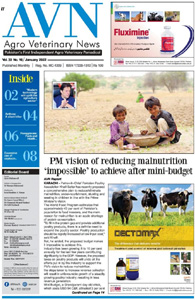
UNITED STATES: The global market for veterinary vaccines is anticipated to expand at a healthy CAGR of 7.2% between 2022 and 2026, surpassing a valuation of over US$ 14.1 billion.
Between 2022 and 2026, the market for veterinary vaccines is predicted to expand at a significant 7.2% CAGR. The global veterinary vaccines market size was estimated to be around US$ 10 Bn in 2021, with a year-over-year growth rate of 6.5% for the entire market. By 2026, the market is expected to reach a valuation of about US$ 14.1 billion.
With the frequency of animal diseases spreading around the globe, the market for veterinary vaccines is predicted to increase rapidly. In 2021, sales of veterinary vaccinations accounted for around 91.3% of the market for veterinary biologics globally. With over a quarter of the market, the attenuated live vaccines segment is dominating the veterinary vaccines market.
Throughout the forecast period, there will be opportunities for sales of veterinary vaccines due to the market’s rapid growth in the treatment of veterinary respiratory diseases and the market for veterinary pain management medications, both of which can be attributed to pet owners’ rising spending on improving the health of their animals.
Due to their ability to effectively replicate naturally acquired immunity, veterinary vaccinations have gained enormous popularity in the market due to their potential to protect both public and animal health. Sales of veterinary vaccines are thought to be strong in emerging countries due to rising pet ownership. These immunizations are essential for ensuring animal longevity and health.
Improving animal health is one of the key priorities for both individuals and governments throughout the world as the threat of a new epidemic spreads across the globe. Billions of dollars are spent each year on drugs and vaccines to give animal’s better immunity and protection from a wide range of illnesses. During the forecast period, this is anticipated to create growth opportunities for veterinary vaccine suppliers and manufacturers. The market for veterinary vaccines as a whole is expected to rise faster thanks to increased attempts to produce vaccinations for zoonotic diseases that are frequently present in people as well.
Veterinary vaccines have quickly developed into the best preventive healthcare options for keeping animals from getting sick and dying from deadly diseases as well as boosting their immune systems. With the help of these vaccines, farmers and pet owners may dramatically slow the development of infectious diseases, enhance the health of their animals, and cut down on medical expenses. The difference in BPS values seen in the global market for veterinary vaccines in H1 2022 – outlook over the H1 2022 projected timeframe shows a fall of 20 BPS units. Additionally, the market shows a 13 basis point share (BPS) reduction in BPS growth in H1-2022 over H1-2021.
In order to introduce effective vaccines, key players profiled in the global veterinary vaccines market are concentrating on ongoing investments in research and development operations. Additionally, to increase their global presence, top veterinary vaccine producers are implementing a variety of market tactics, including joint ventures, partnerships, partnership agreements, sales agreements, and capacity expansion. Due to the increasing number of drug approvals, developments in veterinary research, rise in pet adoption rates, and introduction of new veterinary vaccine market trends, it is projected that the U.S. will dominate the market for veterinary vaccines. Another market for veterinary vaccinations that is developing opportunistically is China. Governments and commercial companies are working together to promote improved animal healthcare via the use of cutting-edge veterinary medical equipment.
In the upcoming years, it is anticipated that the introduction of technologically sophisticated vaccines, rising livestock populations, rising government investments and initiatives to address the load of animal diseases, and expanding pet care markets across developing regions will open up new growth opportunities within the global veterinary vaccines market.
By: Dr Ayesha Farrukh





